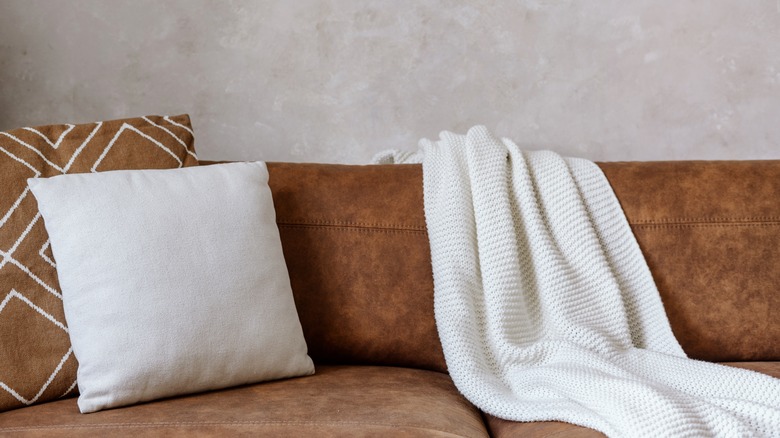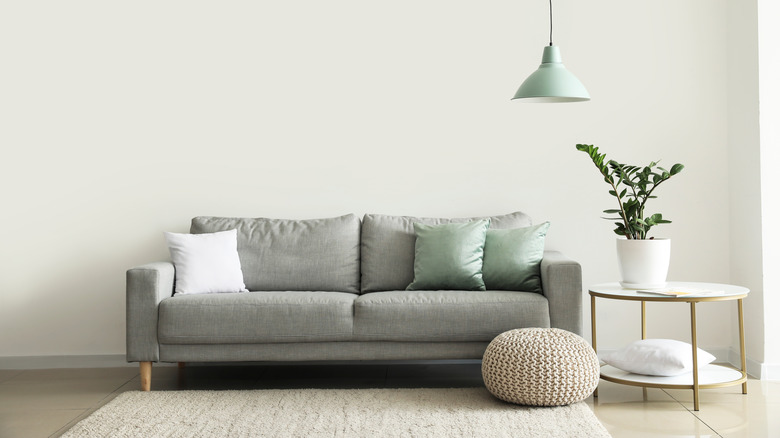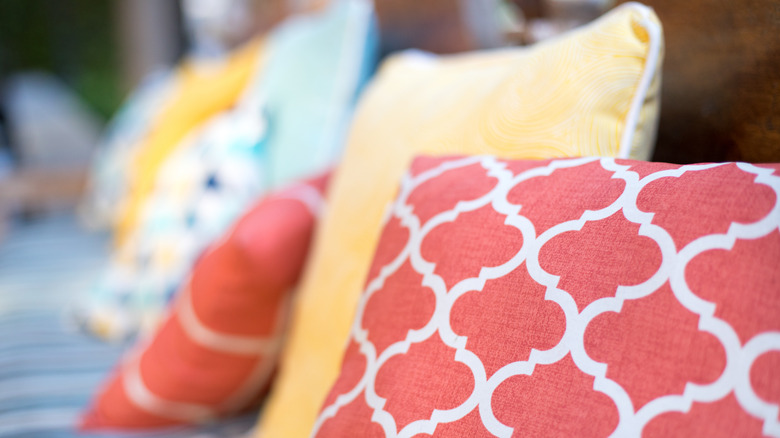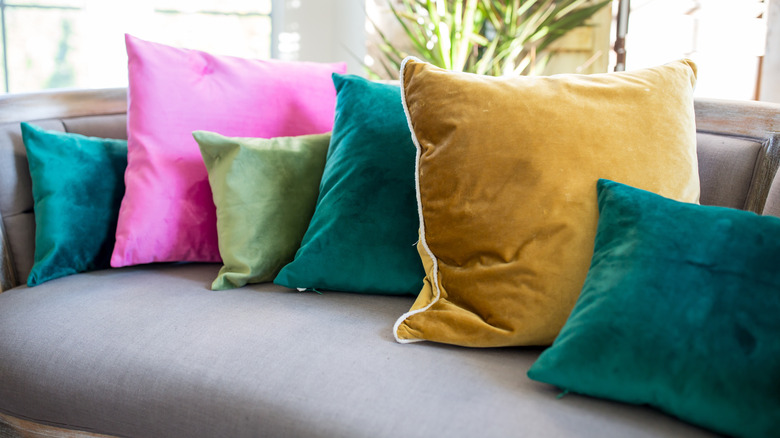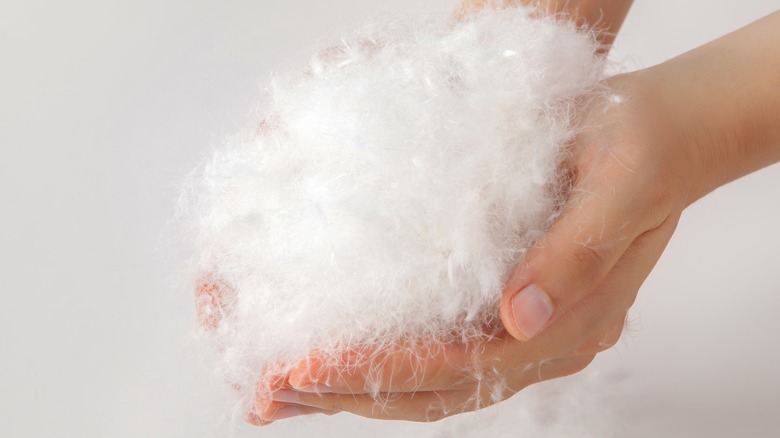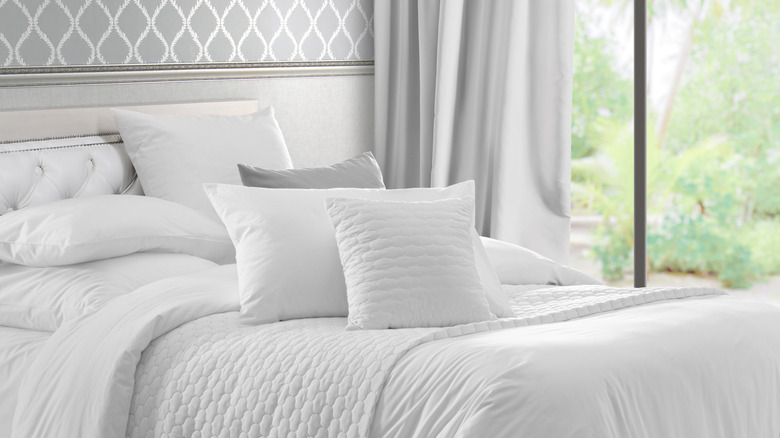How To Choose The Best Throw Pillows For Your Home Décor
Throw pillows are a great way to add color, texture, and personality to any room in your home. Whether you're decorating your living room or sprucing up an outdoor patio, throw pillows can be used to tie together different elements of your décor and create a cohesive look. Not only do they add a splash of color and personality to your space, but they can also provide comfort and support while you are lounging or sleeping. With so many different shapes, sizes, colors, and textures available, choosing the perfect throw pillows for your space may seem like an overwhelming task, according to Parachute.
Luckily, we've created this guide to help you with the selection process when shopping around. From colors and sizes to fabric quality and stuffing materials, our tips will allow you to pick pieces that not only enhance but also complement each other within your home décor scheme.
Choose a color scheme
Before looking for throw pillows, you must identify the aesthetic you want to create. Are you going for a modern look? Or perhaps something more traditional? Knowing your preferred style will help you shop with intention. Once you have finalized this, it's time to pick the colors that best complement your vision. If you already have furniture pieces or existing decorations that will stay in place, then use those as inspiration for your color scheme. Alternatively, if you're starting from scratch, think about which colors would look best with the walls or décor items in the room. If your walls are painted a neutral shade like beige or gray, try adding bright accent colors with vivid throw pillows. But if they have a bolder hue like green or blue, opt for softer colors like pastel pinks or pale yellows. Ballard Designs recommends sticking to a consistent color palette throughout the space.
When aiming for a more modern feel in your home décor, bright and vibrant colors may be the way to go. If you're leaning toward something more traditional or classic-looking, then softer hues such as pastels might be better suited for your space. You can also opt for neutral tones if you want options that won't clash with other elements in the room.
Consider prints and patterns
While solid colors can alter the atmosphere of a space, patterned throw pillows provide an excellent opportunity to inject personality. After settling on a color scheme, consider whether patterns or solid colors would work best. Generally speaking, intricate patterns tend to work better as accent pieces, while solid-colored throw pillows blend seamlessly into most interior designs. Patterns can range from subtle prints like stripes or polka dots to bolder ones like geometric shapes or animal prints. You can even find pillows with more niche designs or imagery related to the things you love — the possibilities are truly endless.
Also, don't forget about texture. Pillows featuring textured elements, like tassels or braids, can add interesting visual details without overwhelming other aspects of the room's décor. Whether you prefer solid colors or fun prints, choose something that reflects your style while still complementing the space's décor. Ang Decorates recommends combining pillows with standout patterns and plain options to balance them out.
Select a cover fabric
Many options are available when choosing fabric types for throw pillows, from cotton, linen, and velvet to suede and faux fur. Pay attention to the material they are made of and their care instructions, and consider both aesthetics and practicality. If you have pets or young children who would have contact with the cushions, opt for a durable fabric that will stand up to wear and tear over time. Rumago Accents says that cotton blends are some of the most popular materials for throw pillow covers because they don't wrinkle easily, making them easy to maintain and care for. Plus, cotton blends are affordable and durable, so you won't have to worry about replacing them anytime soon.
Linen is an excellent option for those looking for something slightly more elevated; it resists wrinkles relatively well compared to other fabrics like silk or velvet. Plus, linen is surprisingly durable and can handle repeated use without showing signs of wear and tear too quickly. Try velvet or faux fur if you're looking for something more luxurious but durable enough for everyday use. These fabrics make great accent pieces that will draw attention without sacrificing usability.
Choose a fill material
Even the most stylish pillow won't look great if it isn't full and comfortable. That is why selecting the right filling material is essential when picking out throw pillows. When looking for filler material for your throw pillows, there are several factors to consider — from price point and upkeep requirements to comfort level and durability — before making your purchase. Honeycomb Home recommends down and feathers as some of the softest and most luxurious inserts for a throw pillow. A down-filled pillow is incredibly light and fluffy, making it an excellent choice for a decorative accent piece in your living room or bedroom. They can conform to the shape you want them to be while providing the proper support. They also tend to be durable and long lasting, making them perfect for daily use. The downside to this type of filling is that it tends to be more expensive than other options.
Due to their affordability and low maintenance requirements, synthetic polyester fibers are one of the most popular fillings used in throw pillows today. Synthetic polyester offers a similar softness and springiness as down but at a fraction of the cost. Additionally, synthetic polyester fibers are hypoallergenic and resistant to mildew, mold, and dust mites, making them ideal for those with allergies or sensitive skin.
How to determine the right size
Throw pillows come in all shapes and sizes — from small square cushions to large rectangular ones — so think about how they will fit your home décor before purchasing them. Generally speaking, you'll want larger pillows if you have larger furniture like a sofa or bed frame. Smaller pillows will work better if you have smaller pieces, such as accent chairs or ottomans. Opt for pillows that measure at least 18x18 inches; this size looks best when arranged on sofas and chairs. Arianna Belle recommends layering multiple pillows together and aiming for varying sizes, saying that a 20 by 20-inch pillow on top of a 22 by 22-inch pillow makes for a great combination. Depending on the size of your furniture, you may also want to consider going even bigger with 24-inch or 26-inch square pillows.
In bedrooms, there is a lot of flexibility when it comes to choosing pillow sizes. Standard bed sizes typically require two or queen-sized pillows per person; however, you can mix in some fun throw pillows for an added touch of color and texture. Smaller decorative throw pillows work best because they don't take up too much space. Go for 12x12 inch pillows in classic shapes such as squares and rectangles for a timeless look in any bedroom style. On beds with extra large headboards, you can go slightly bigger — try using 16x20 inch pillows for maximum impact.
